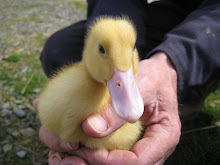
...and we have more species than I can count. Well I
could count them but fingers and toes would be needed from several participants and I am sitting here with just dogs for company and they won't keep still. The Devon Biodiversity Records Centre
survey records have been compiled and there are more Latin names and geological terminology being bandied about than have passed before my eyes to date, although perhaps I was asleep at that point in geography lessons. The words are sonorous and serious and have a grandeur that moves you beyond the soil conditions and bring vividly to mind the layers leading to the earth's core and a sense of prehistory.
Carboniferous,
Namurian,
Crackington Formation,
Pleistocene. All of it under my feet.
Three sites across the farm were surveyed, with two of them including the
Culm qualifying for consideration as County Wildlife Sites. The Culm and its surrounding wood host 80 species including twelve
Ancient Woodland Indicator species: Hard-fern, Remote Sedge, Wood-sedge, Creeping Soft-grass, Bluebell, Holly, Yellow Pimpernel, Three-nerved Sandwort, Wood Sorrel, Primrose, Red Currant and Field-rose. With my natural interest in the edible, the discovery of the wild red currant was a thrill - I had no idea they occurred in woodland, and daftly
visualised the fruit bushes as garden centre specials, cultivated within an inch of their glossy plant lives. The chance of tasting a currant before the
dormice get their nibblers round them is small. I might put up a notice asking them to leave me a sample.
 A day planting trees in the orchard, pruning older ones and cutting down overdeveloped willow - that is crowding out the orchids and purple moor grass in Moor Wood - as we steadily work on increasing the culm patch. The latter was incredibly hard work, the mud sucking at my wellies so that I needed all my strength to lift my feet as I dragged willow branches to the edges of the area we're clearing. At one point I sank up to the top of my wellies and had nothing to cling to to pull myself free. With a lot of toe wiggling, swearing and extraordinary wet sucking noises (made by the mud, not me) I freed myself.
A day planting trees in the orchard, pruning older ones and cutting down overdeveloped willow - that is crowding out the orchids and purple moor grass in Moor Wood - as we steadily work on increasing the culm patch. The latter was incredibly hard work, the mud sucking at my wellies so that I needed all my strength to lift my feet as I dragged willow branches to the edges of the area we're clearing. At one point I sank up to the top of my wellies and had nothing to cling to to pull myself free. With a lot of toe wiggling, swearing and extraordinary wet sucking noises (made by the mud, not me) I freed myself. 
























